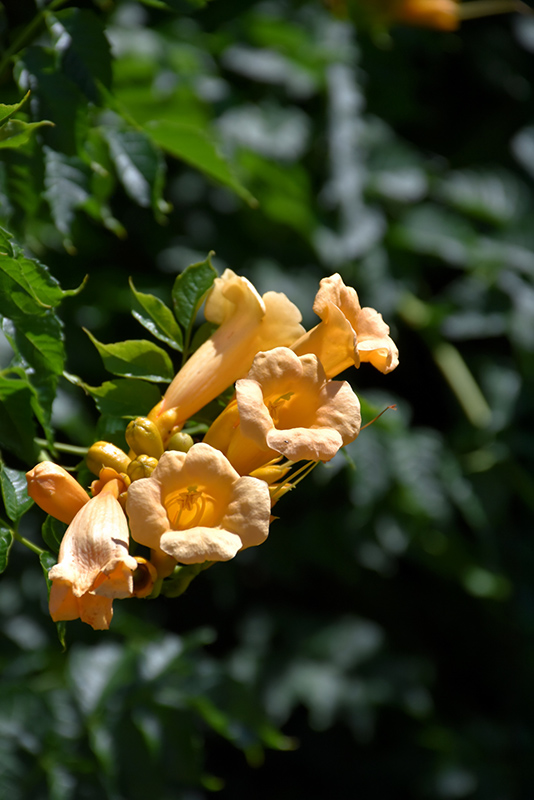>> Home
Snazzy Brass™ Trumpetvine
Campsis radicans 'Gresnbr'
Height: 40 feet
Spread: 24 inches
Sunlight:
![]()
![]()
Hardiness Zone: 4
Other Names: Trumpet Vine, Trumpet Creeper Trumpetcreeper
Brand: Garden Debut
Description:
A distinguished vine, producing golden yellow, trumpet shaped blooms from spring to fall; excellent as an accent on a trellis, pergola or garden wall; reaches great lengths when supported
Ornamental Features
Snazzy Brass™ Trumpetvine features bold clusters of gold trumpet-shaped flowers with yellow overtones at the ends of the branches from late spring to early fall. It has dark green deciduous foliage. The serrated pointy pinnately compound leaves turn yellow in fall.
Landscape Attributes
Snazzy Brass™ Trumpetvine is a dense multi-stemmed deciduous woody vine with a twining and trailing habit of growth. Its average texture blends into the landscape, but can be balanced by one or two finer or coarser trees or shrubs for an effective composition.
This is a high maintenance woody vine that will require regular care and upkeep, and can be pruned at anytime. It is a good choice for attracting birds and hummingbirds to your yard, but is not particularly attractive to deer who tend to leave it alone in favor of tastier treats. Gardeners should be aware of the following characteristic(s) that may warrant special consideration;
- Suckering
- Invasive
Snazzy Brass™ Trumpetvine is recommended for the following landscape applications;
- Hedges/Screening
- General Garden Use
Planting & Growing
Snazzy Brass™ Trumpetvine will grow to be about 40 feet tall at maturity, with a spread of 24 inches. As a climbing vine, it tends to be leggy near the base and should be underplanted with low-growing facer plants. It should be planted near a fence, trellis or other landscape structure where it can be trained to grow upwards on it, or allowed to trail off a retaining wall or slope. It grows at a fast rate, and under ideal conditions can be expected to live for approximately 20 years.
This woody vine does best in full sun to partial shade. It is very adaptable to both dry and moist locations, and should do just fine under average home landscape conditions. It is considered to be drought-tolerant, and thus makes an ideal choice for xeriscaping or the moisture-conserving landscape. It is not particular as to soil type or pH, and is able to handle environmental salt. It is highly tolerant of urban pollution and will even thrive in inner city environments. This is a selection of a native North American species.

